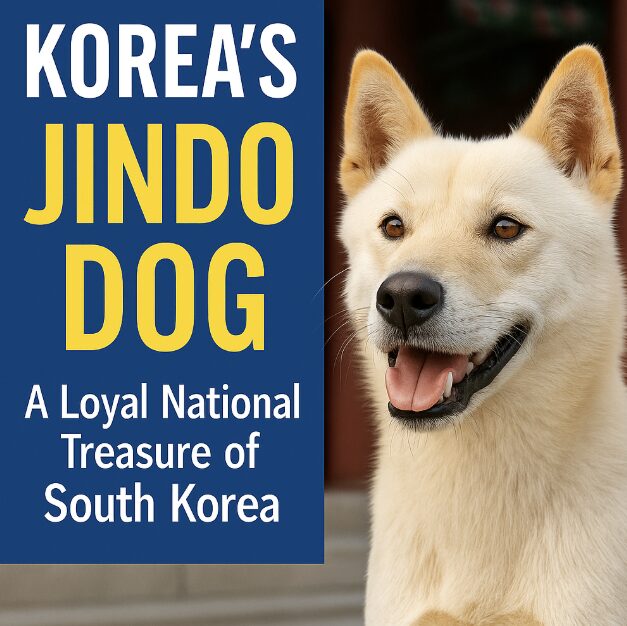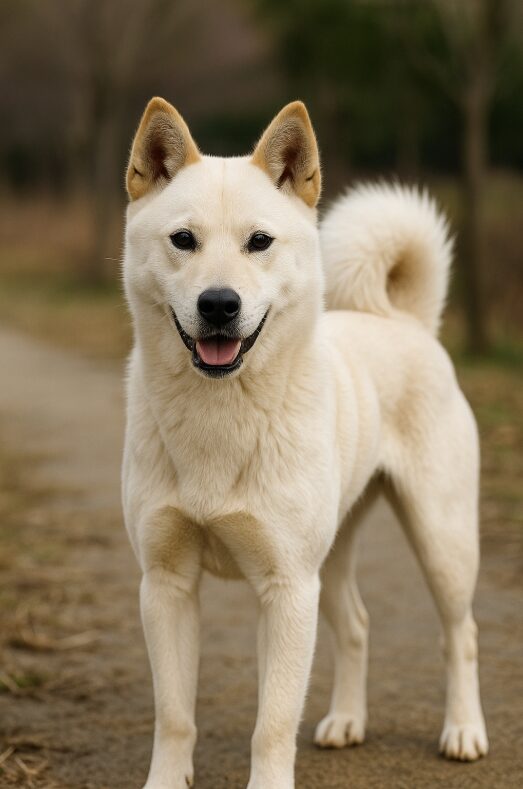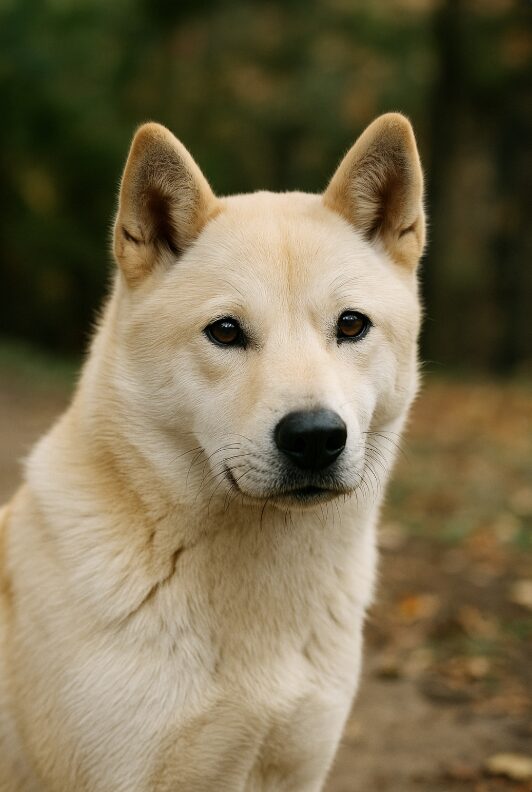If you’ve ever searched for Korean dog breeds, one name stands out above all: the Jindo dog. Native to a small island off the southwest coast of Korea, the Jindo is more than just a pet — it’s a symbol of loyalty, intelligence, and national pride.
Recognized as Natural Monument No. 53 in South Korea, the Jindo is deeply woven into the country’s culture, history, and identity. In this post, we’ll explore everything you need to know about the Jindo dog, from its origins and personality traits to how it’s viewed in Korea today. Whether you’re an animal lover, a potential adopter, or simply curious about Korean heritage, this guide will give you a comprehensive understanding of one of Korea’s most beloved native animals.

Where Does the Jindo Dog Come From?
The Jindo dog (진돗개) is named after Jindo Island, located in South Jeolla Province in the southwestern region of Korea. This remote and relatively undeveloped island provided the ideal environment for the development of a unique, pure dog breed that was largely untouched by foreign influences for centuries.
Historical records suggest that Jindos were used by local villagers as hunting and guarding dogs, thanks to their sharp instincts and fierce loyalty. Over generations, the breed was naturally selected for qualities like endurance, independence, and strong attachment to a single person or family.
Today, Jindo dogs are still found on the island, where they roam freely or are kept by traditional breeders. The Korean government has designated Jindo Island as a protected breeding area, and strict regulations are in place to prevent crossbreeding and preserve the genetic purity of the dogs.
What Does a Jindo Dog Look Like?

Jindos have a wolf-like appearance, similar in some ways to other East Asian spitz-type breeds like the Shiba Inu or Akita, but they have distinct characteristics.
Size: Medium-sized
Males: 45–55 cm (17–21 inches), 18–23 kg (40–50 lbs)
Females: Slightly smallerCoat: Double coat that is thick and weather-resistant. The outer coat is stiff, while the undercoat is soft. Common colors include:
White (most iconic)
Fawn
Black
Gray
Brindle (known as “호랑이 무늬” or tiger-striped)
Black and tan
Tail: Curled over the back or carried in a sickle shape
Ears: Triangular and upright
Eyes: Almond-shaped, typically dark brown or amber
Their overall look is athletic, alert, and balanced — built more for agility and endurance than for size or intimidation.
Key Personality Traits of the Jindo Dog
One of the main reasons the Jindo has earned national admiration is its distinct personality, especially its legendary loyalty.
Loyalty
This is the most famous characteristic. Jindos are known to bond intensely with one person or family. Once attached, they will protect, wait for, and even travel long distances to return to their owner.
One well-known story is that of Baekgu, a Jindo dog who returned to her original home on Jindo Island after a 300-kilometer journey. This story is so beloved in Korea that Baekgu’s statue stands in her hometown, and her tale is taught in schools.
Intelligence
Jindos are highly intelligent, capable of learning commands quickly and making independent decisions. However, this also means they can be stubborn and aloof with strangers.
They are not a good choice for first-time dog owners who expect a submissive or easygoing temperament. Proper training and early socialization are essential.
Independence
They are clean, quiet, and tend to be reserved indoors, often choosing to observe rather than interact constantly. Their independent streak can be mistaken for disobedience — but they simply don’t respond well to harsh or repetitive commands.
Guarding Instinct
Jindos are natural watchdogs. They will bark if they sense something unfamiliar but are not generally aggressive without cause. They tend to be territorial and do best in homes where they can patrol and observe their surroundings.
Not Great with Other Pets
Due to their hunting background and strong prey drive, Jindos often do not get along with small animals like cats or rabbits. With other dogs, their compatibility depends heavily on early socialization.
Are Jindo Dogs Good Pets?
Yes — but only for the right kind of owner.
Pros:
Extremely loyal and protective
Low odor and relatively clean
Quiet and calm indoors
Independent and not overly needy
Strong health and long lifespan (12–15 years)
Challenges:
Strong prey drive and independence
Requires early training and socialization
May be distrustful of strangers or new environments
Needs secure fencing and room to exercise
Difficult to train using conventional Western obedience methods
If you value a loyal companion who respects personal space, a Jindo can be a deeply rewarding companion.
How Are Jindo Dogs Viewed in Korea Today?

The Jindo dog is a source of national pride and has been a designated Natural Treasure since 1962. On Jindo Island, there are annual festivals and educational programs that celebrate the breed.
However, outside of Jindo Island, the breed is not as common in Korean households. Urban families often prefer smaller breeds that are easier to manage in apartment settings.
Still, Jindos are sometimes used by the military and police for tracking and search operations, thanks to their strong sense of smell and loyalty.
Can You Adopt or Own a Jindo Outside Korea?
Yes, but it can be complex.
In Korea, exporting purebred Jindos is regulated by law to preserve the breed. However, Jindo-mix dogs are available through international adoption from Korean animal shelters. Many are rescued from rural areas or meat trade situations and sent to the U.S., Canada, and Europe through reputable rescue organizations.
If you are considering adopting a Jindo or Jindo mix abroad:
Look for rescue groups like Korean K9 Rescue, Save Korean Dogs, or Band for Animal
Be prepared for an adjustment period — these dogs often need time to trust and adapt
Avoid pet stores or non-transparent breeders
Jindos are often misunderstood in the West due to their reserved nature and high intelligence. But with patience and respect, they can thrive even outside Korea.
The Jindo Dog Is More Than a Pet — It’s a Reflection of Korea’s Spirit
From the remote hills of Jindo Island to global rescue networks, the Jindo dog carries with it centuries of loyalty, resilience, and quiet strength. It is a breed that doesn’t beg for attention but earns your respect — one that requires mutual trust, not dominance.
For travelers visiting Korea, meeting a Jindo in its natural setting is a memorable experience. For those living abroad, adopting a Jindo is a commitment to understanding a deeply loyal and independent soul — one that mirrors Korea’s own complex beauty.